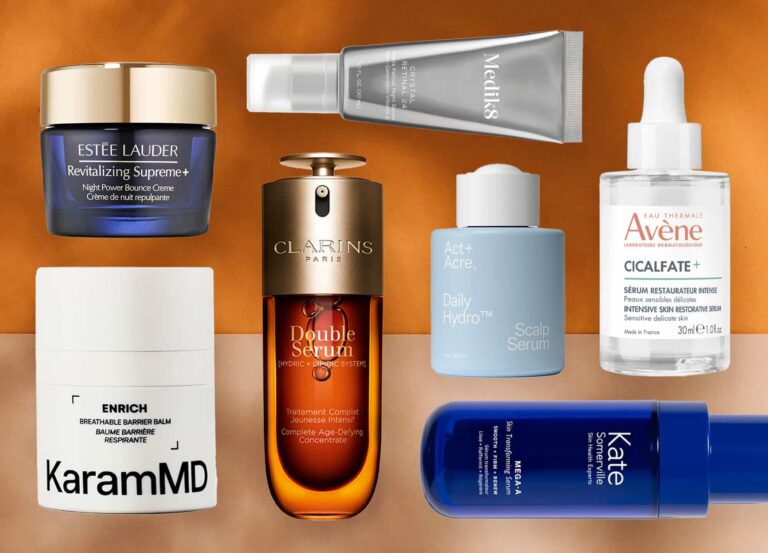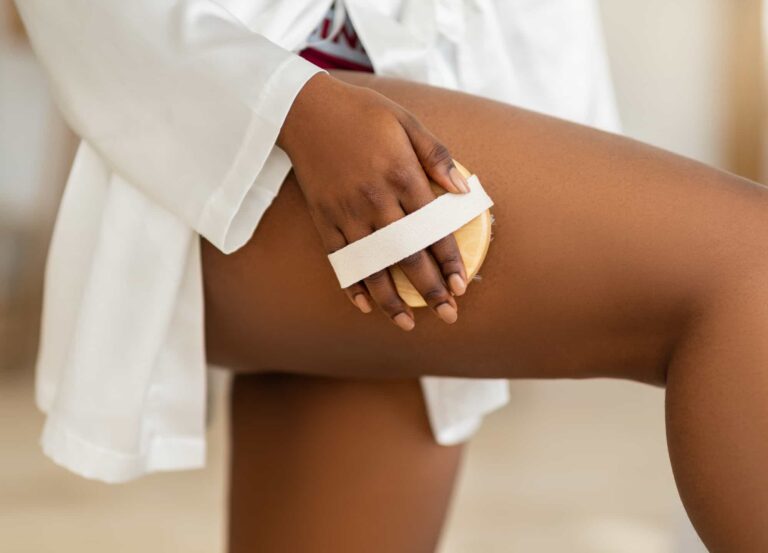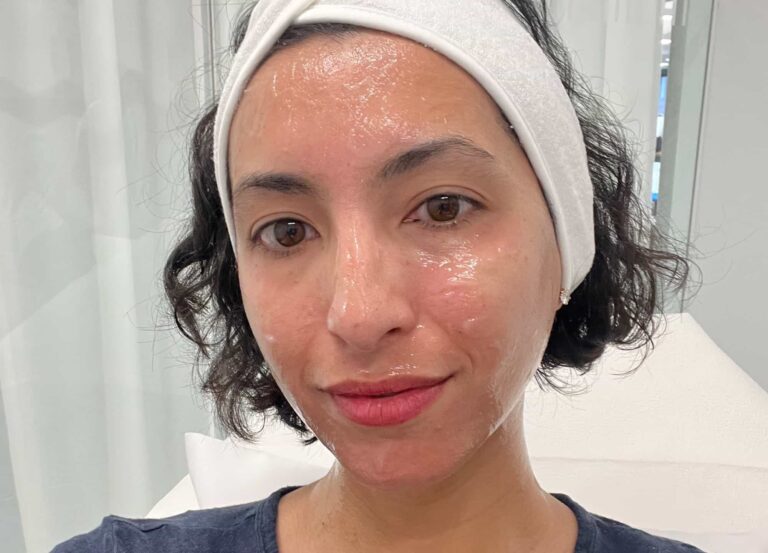When it comes to complexion concerns, skin tone often gets all the attention. But textural issues can be just as problematic and deserve equal consideration. Sure, texture is innately more about how the skin feels rather than it looks. But it’s still very easy to see textural irregularities on the skin, be they on the face or the body.
Long story short, the best way to address uneven skin texture is to exfoliate. It may sound simple, but there are some important nuances to be aware of, depending on what’s causing the textural problems to begin with. Ahead, dermatologists share the best exfoliating tips, tricks, and product picks for uneven skin texture.
For clogged pores
Clogged pores contribute to uneven skin texture in two different ways. Blackheads make pores appear more prominent, stretching them out and creating the appearance of tiny holes or depressions in the skin, says Dr. Sheila Farhang, a board-certified dermatologist in Tucson, Arizona. On the flip side, whiteheads (as well as inflamed pustules) result in raised bumps. Regardless, the solution is the same—chemical exfoliation via a retinoid. “[Because it increases] the rate of skin cell turnover, a retinoid is one of the best ways to help unclog pores in both instances,” explains Dr. Farhang.
Dr. Michelle Henry, a board-certified dermatologist in New York City, agrees. She points out that retinoids also have an anti-inflammatory effect—a boon for improving both tone and texture, which inevitably go hand in hand. And while these are more superficial effects, you can’t forget that retinoids are proven collagen stimulators that also work in the deeper layers of the skin. Why is that important? “By optimizing and maintaining collagen production, you’re giving the skin what it needs to stay smooth, taut, and tight, which can help ward off textural issues in the future,” says Dr. Henry.
One to try: Obagi360 Retinol 1.0 ($74), a top-notch treatment that combines encapsulated retinol with hydrating shea butter and jojoba oil, to minimize the likelihood of any irritating side effects.
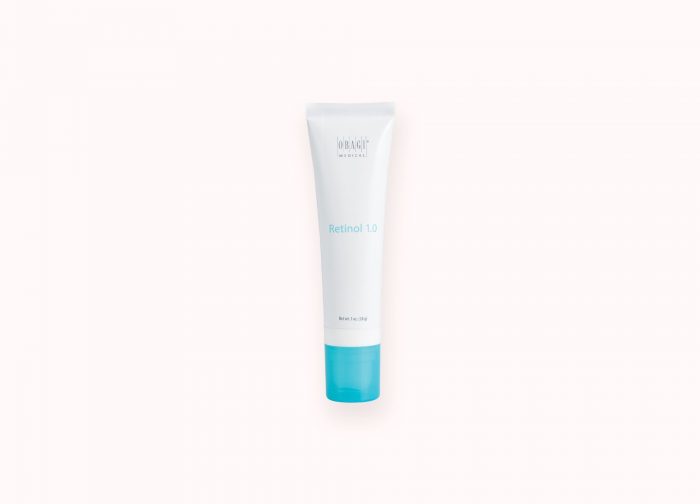
For dry patches
There’s run-of-the-mill dry skin, and then there’s skin that’s so dry it starts to flake and scale, leading to noticeable changes in texture that you can see and feel, says Dr. Henry. Because dryness and a compromised skin barrier are inextricably linked, chemical exfoliants actually aren’t the best choice here; they can be too irritating and wind up exacerbating the situation. In this case, a physical exfoliant can be a good alternative—but with a few caveats. “Overexfoliating, no matter how you do it, is going to end up breaking down the skin barrier even further, so you really need to take an individualized approach and consider your skin type before choosing a product or method,” advises Dr. Henry.
To that point, those who have very dry and/or sensitive skin to begin with may actually want to avoid exfoliating altogether. Instead, both doctors say, using deeply moisturizing products that contain emollient (read: skin-softening) ingredients as well as strengthening ceramides can go a long way toward helping smooth out a flaky or scaly texture. Senté Dermal Repair Ultra-Nourish ($179), a rich and nourishing cream that contains ceramides as well as a litany of hydrating and moisturizing ingredients, fits the bill.
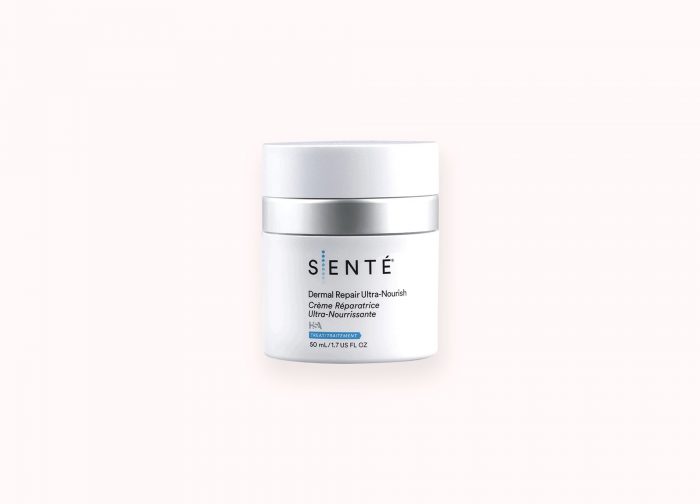
If your skin is normal to oily, physical exfoliation can be a good way to help quickly remove any dead flakes or scales. For the face, consider gentle scrubs. One indication that they’re gentle enough? “The actual exfoliating particles in the formula should be so small that you’re unable to see them,” advises Dr. Farhang.
Try SkinCeuticals Micro-Exfoliating Scrub ($31), which pairs hydrated silica (the exfoliating ingredient) with hydrating aloe and glycerin. To combat dry, rough patches on the body, Dr. Henry suggests pairing a hydrating body wash with a buff puff. Or opt for an exfoliating formula that contains hydrating ingredients; Dr. Farhang likes Olay Exfoliating & Moisturizing Body Wash ($8). Also important: limit your sloughing sessions, for both face and body, to no more than two to three times per week.
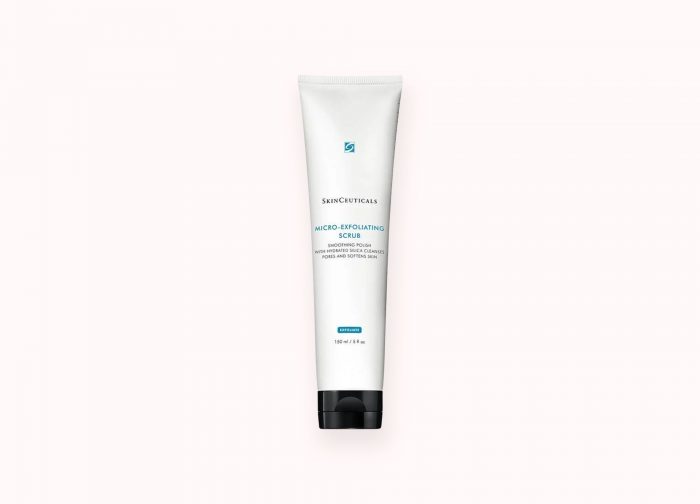
For keratosis pilaris
An extremely common condition, keratosis pilaris (also known as KP) occurs when extra skin cells get stuck in the hair follicle, causing red, raised bumps that most often appear on the backs of the arms and thighs, explains Dr. Farhang. According to both doctors, the best solution is a combination approach. Manual exfoliation can help leave the skin a bit smoother in the short-term, but it needs to be paired with chemical exfoliation, to keep those extra cells from blocking the hair follicle over time, says Dr. Farhang. Your best bet is to use the aforementioned physically exfoliating type of body wash, followed by a chemical exfoliating lotion. Because keeping the skin hydrated is another important component in treating KP, an exfoliating lotion is the perfect multitasker. The derms’ favorite chemical exfoliant for this purpose? Lactic acid, a gentle alpha hydroxy acid that also acts as a humectant, helping to attract and hold water in the skin. Find it in Amlactin Daily Moisturizing Body Lotion ($13), a wallet-friendly pick that can be used daily. Alternatively, swipe on a lactic acid treatment, like ClarityRx Brighten It 10% Lactic Acid Solution ($54), onto any affected areas and layer a plain moisturizer over it.

For acne scarring
Acne scarring is admittedly tough to treat at home. Acne can cause rolling or ice pick scars on the face; on the body, it can often leave behind raised scars or even keloids, especially on the back, says Dr. Farhang. Either way, the best thing you can do is use a retinoid. “While it’s not a solution, it’s a good way to prevent future scarring because it keeps collagen healthy and intact,” she explains. As far as addressing this type of textural problem, seeing a dermatologist for in-office treatments is by far your smartest bet. Lasers are most often used, although radiofrequency microneedling is another good option, one that’s generally safer for a wider range of skin tones, notes Dr. Henry.








